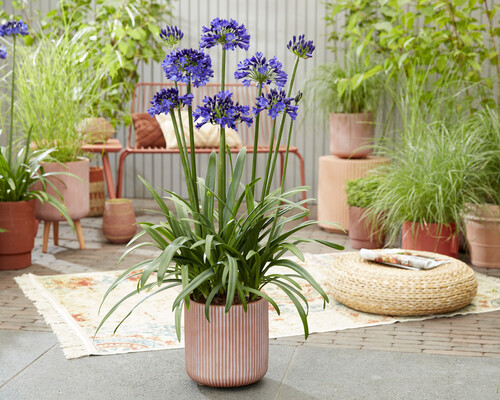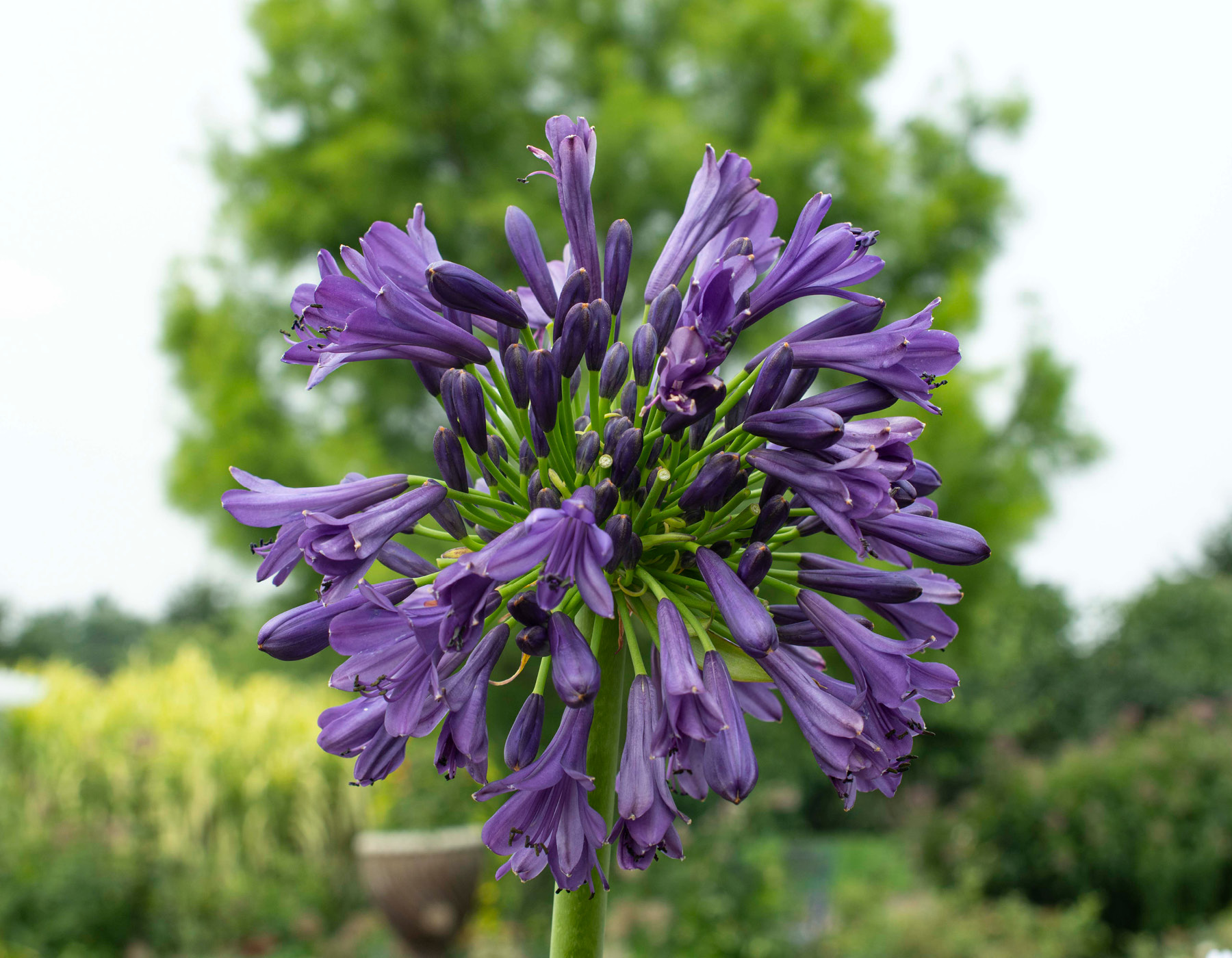Letting Loose the Secret to Effective Agapanthus Growing: Advice for a Flourishing Garden
In the world of gardening, cultivating agapanthus efficiently requires a calculated method that includes various aspects of plant treatment. By understanding the nuances of agapanthus farming, one can develop an environment where these plants thrive and bloom generously.
Growing Agapanthus: Finest Practices
When planting Agapanthus, proper dirt preparation is essential for making certain successful development and advancement of these beautiful blossoms. Agapanthus, typically referred to as Lily of the Nile or African lily, prospers in well-draining soil with a somewhat acidic to neutral pH degree - Agapanthus. Before growing, it is important to amend heavy clay dirts with organic issue such as compost or peat moss to enhance water drainage and supply essential nutrients for the plants
To plant Agapanthus, select a place that obtains full sunshine to partial shade, as this will advertise healthy development and abundant flowering. Dig an opening twice the size of the plant's origin ball and put the Agapanthus at the same deepness it was formerly growing. Carefully backfill the opening with dirt, pressing down securely to get rid of any air pockets around the origins.
Water the newly planted Agapanthus extensively and remain to maintain the soil evenly wet, especially during the plant's active growing season. Agapanthus. Using a balanced plant food once a month can even more support the plant's development and flowering. By adhering to these ideal methods for growing Agapanthus, you can develop a stunning display of these fascinating flowers in your yard
Ideal Soil Issues for Agapanthus
For ideal growth and blooming success of Agapanthus plants, making certain the soil problems are suitable is important. Agapanthus chooses soil that is rich in nutrients, so incorporating a well balanced plant food during the growing period can promote healthy growth and lively blossoms.

Watering and Fertilizing Tips
To guarantee healthy development and dynamic blooms, correct watering and fertilizing methods are vital for successful Agapanthus cultivation. Agapanthus plants benefit from normal watering, especially throughout the growing season.
When it concerns fertilizing Agapanthus, a well balanced fertilizer with equal components nitrogen, phosphorus, and potassium can be applied in the springtime to promote healthy and balanced growth and flowering. Slow-release fertilizers are excellent for providing nutrients progressively over a prolonged duration. Avoid over-fertilizing, as this can lead to too much vegetation growth at the expenditure of blossoms.
Furthermore, incorporating raw material like compost right into the dirt can enhance nutrient degrees and enhance dirt structure, helping in the total wellness of the Agapanthus plants. By following these watering and feeding ideas, gardeners can guarantee their Agapanthus plants prosper and create magnificent screens of blossoms.
Trimming and Deadheading Strategies
Appropriate trimming and deadheading techniques play a crucial duty in keeping the health and wellness and aesthetic appeals of Agapanthus plants, complementing the important practices of watering and feeding for successful farming. Pruning Agapanthus entails eliminating invested flower heads, yellowing or a fantastic read dead fallen leaves, and general shaping of the plant to advertise better development. Deadheading, the procedure of eliminating faded flowers, not just enhances the plant's look but also motivates additional blooming.
When deadheading Agapanthus, it is suggested to trim off the flower stem at the special info base using sharp, tidy shears. This process reroutes the plant's energy from seed manufacturing back into root and vegetation development, promoting a healthier and extra robust plant. Routine deadheading can expand the growing period of Agapanthus and stop self-seeding, which can bring about overcrowding.
In regards to trimming, Agapanthus generally gain from a light trim after flowering to tidy up the plant and motivate fresh development. Cutting down the invested blossom stems and getting rid of any kind of damaged or dead foliage helps maintain the plant's vigor and overall appearance. Nevertheless, it is crucial to stay clear of reducing right into the crown of the plant, as this can compromise its health and wellness.

Protecting Agapanthus From Pests and Diseases
Applying efficient bug and illness management strategies is crucial to safeguarding the wellness and vigor of Agapanthus plants in cultivation. Agapanthus are generally durable plants, however they can still succumb to different insects and conditions otherwise effectively taken care of. One common pest that influences Agapanthus is the Agapanthus borer, a caterpillar that tunnels right into the plant, triggering damage to the blossoms and leaves. To stop problems, normal assessment of the plants is important. If borers are detected, they can be by hand removed, or insecticidal soap can be made use of as a control step.
In addition to bugs, Agapanthus are vulnerable to illness such as root rot and fungal leaf spots. These problems can often be stopped by ensuring appropriate water drainage and avoiding overwatering. Impacted components of the plant need to be promptly eliminated to stop more spread if signs of disease show up. Fungicides might also be used as a treatment procedure, adhering to the supplier's instructions carefully. By staying alert and resolving parasite and condition issues promptly, gardeners can help their Agapanthus grow and prosper.

Verdict
In final thought, successful growing of agapanthus needs correct planting methods, perfect dirt problems, sufficient watering and feeding, regular trimming and deadheading, and protection from parasites and diseases. By following these ideas find more information and tricks, garden enthusiasts can make certain a prospering yard filled with stunning agapanthus blossoms. Agapanthus. Remember to maintain constant treatment and focus to detail to promote the health and wellness and durability of these magnificent plants
When planting Agapanthus, proper dirt prep work is essential for guaranteeing successful growth and development of these stunning blossoms.Water the recently grown Agapanthus extensively and proceed to maintain the dirt equally wet, specifically during the plant's active growing period.For optimal growth and blooming success of Agapanthus plants, ensuring the soil conditions are perfect is important. When growing or transplanting Agapanthus, guarantee the soil is well-prepared to offer the essential foundation for the plants to develop themselves successfully. One usual pest that affects Agapanthus is the Agapanthus borer, a caterpillar that passages right into the plant, creating damages to the fallen leaves and flowers.
Comments on “Seasonal Agapanthus Treatment: Getting Ready For Winter and Summertime”